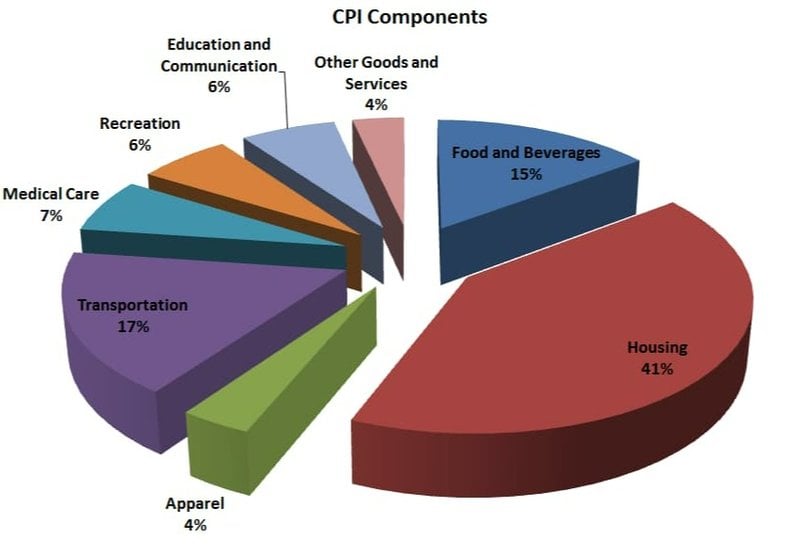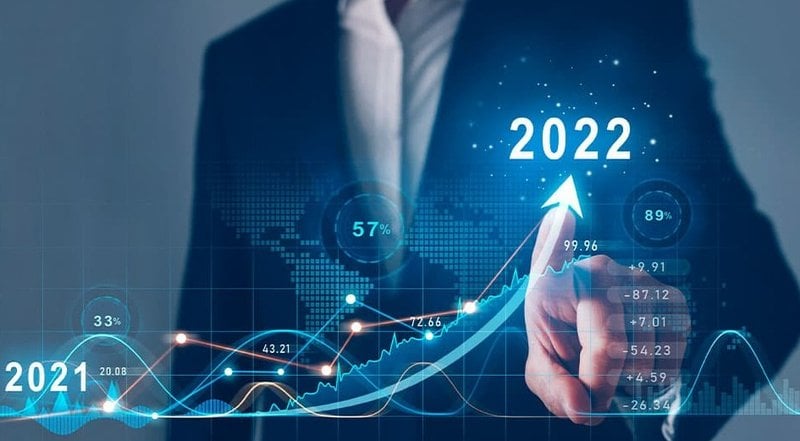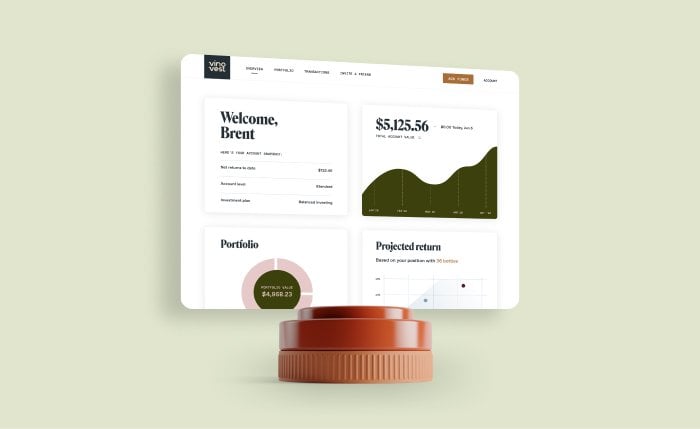Inflation vs Recession: Differences, Best Asset To Invest In
Inflation vs recession: wondering how they’re different?
While inflation is the increase in prices of goods and services, a recession is a period of economic slowdown signified by negative growth.
While both terms have negative connotations, they have several differences.
In this article, we’ll take an in-depth look at what inflation and recession are. We’ll also explore an alternative asset (fine wine) that can help you beat inflation and recession!
Further reading
- Check out these 7 Useful Tips On Beating Stagflation.
- If you’re looking for alternative investments, check out this Ultimate Guide To Investing In Wine.
What Is Inflation?

Inflation is the gradual increase in the prices of goods and services over time. As a result, a unit of currency purchases fewer goods and services, thereby weakening the currency.
Economists state that modest inflation benefits an economy by encouraging consumer spending, aiding businesses, and boosting the economy.
However, too much inflation means the cost of goods and services is unusually high. In other words, consumers get less for their money. High inflation is also detrimental for savers, as low interest rates and rising inflation reduce the value of any future earnings.
From a saver's perspective, recessions, through their association with Fed rate hike, offers the rare opportunity to invest in safe securities at more attractive rates.
What Causes Rising Inflation?

Various factors can increase inflation in an economy.
Inflation is often the byproduct of economic growth, where people have lots of surplus cash and access to credit. If consumers increase spending enough, suppliers will raise prices to curb demand.
However, inflation can also be caused by things that have little to do with economic conditions. Limited oil supplies, for example, create fuel price increases that consumers have to bear.
Supply chain constraints can also lead to issues in supply, increasing prices.
And, if left unchecked, it can lead to soaring prices and catastrophic economic damage. Zimbabwe is a good example, recording a monthly inflation rate of about 79 billion percent in November 2008.
For investors holding physical assets, such as real estate and farmland, inflation often coincides with a rise in the value of these assets.
However, in the US, despite higher than expected inflation, long-term real estate equity earnings were subdued, as were returns from other traditionally inflation-resistant assets, like commodities.
How is Inflation Measured?

There are several metrics used to measure inflation.
One of the most popular is the Consumer Price Index (CPI), which measures the prices of a basket of goods, including food, transportation, healthcare, and recreation.
The Bureau of Labour Statistics calculates the Consumer Price Index by taking price changes from each item in the basket and averaging them based on their weight in the whole basket.
The Bureau of Labor Statistics is also tasked with calculating the Producer Price Index, another critical measurement of the economy’s performance.
How do Governments Control Inflation?

One of the more common ways to curb inflation is through monetary policy. Central banks, such as the Federal Reserve of the United States, will attempt to cool economic growth by managing the money supply in the economy. By reducing the money supply, demand declines, and prices fall.
Alternatively, central banks may reduce the money supply by withdrawing specific paper notes and coins from circulation or limiting the amount of money commercial banks can lend.
The rising inflation spurred by the Covid pandemic was augmented by several other factors like high demand and bottlenecks in the labor market.
While it’s not over yet, the good news is that the worst is likely past, with current inflation expectations suggesting a more moderate outcome.
Easing wage growth and a strengthening labor market should allow figures to temper throughout the rest of the year.
Some may argue that, given the current wage growth and the inflation rate, a recession could reduce inflation while leaving nominal wage growth untouched. However, higher unemployment would significantly impact wage growth, more so than it would lower inflation.
Now, let’s see how a recession is different.
What Is A Recession?

Two consecutive quarters of falling Gross Domestic Product usually constitute a recession. This makes sense because Gross Domestic Product is a measurement of economic activity.
However, here’s how the National Bureau of Economic Research (NBER) Business Cycle Dating Committee - the official recession scorekeeper - defines a recession:
“A significant decline in economic activity that is spread across the economy and that lasts more than a few months.”
A recession isn’t as severe as a depression but generally includes unemployment, low commodity prices, a drop in the price of assets, and low retail sales. All of these things reduce confidence in the economy.
Although there’s only been one economic depression, it was characterized as having a high unemployment rate, a significant drop in GDP, and a much longer timeline.
What Causes a Recession?

Although each recession is unique, some common causes of a recession include:
- A sudden economic shock: An economic shock is a surprise problem that causes severe financial damage. The coronavirus pandemic, which resulted in economies worldwide shutting down, is an example of a sudden economic shock.
- Excessive debt: If individuals and businesses take on too much debt, the cost of servicing that debt can become too expensive to where they can’t afford the repayments. This leads to defaults and bankruptcies, which can adversely affect the economy.
- Asset bubbles: A strong economy can lead to over-optimistic investors. Former Chairman of the Federal Reserve Bank Alan Greenspan referred to this as “irrational exuberance.” It inflates the market until it pops, causing panic selling which can crash the market and spark a recession. Much in the same way as the Great Depression began.
The NBER committee doesn’t officially use the unemployment rate as an indicator of recession. However, the Sahm rule states that a recession is likely when the unemployment rate three-month moving average rises by at least half a percentage point.
How are Recessions Measured?

The National Bureau of Economic Research tracks real personal income minus government transfers, employment, various forms of consumer spending, and industrial production.
Additionally, because the committee relies on government statistics only available at certain intervals, it can only officially designate a recession after it’s started.
Chief economist at UBS, Jonathan Pingle, states that US consumer spending has remained flat throughout 2022. And, if it pulls back, it could be a confidence shock, which could put the economy in a tenuous spot, increasing recession risk.
How do Governments Control Recessions?

During times of steep economic downturn, a central bank such as the Federal Reserve Bank may take dramatic steps to reduce unemployment and bolster prices.
They can lower interest rates through monetary policy by buying debt securities in the open market in exchange for bank credit.
These banks can then loan money to each other at a lower rate.
This drop in interest rates should then spread throughout the financial system.
Additionally, the United States Federal Reserve or any other central bank can lower capital requirements. While the Fed strictly regulates commercial banks to ensure they maintain minimum financial reserves, banks may be allowed to dip into these reserves during recessions.
So, are we heading for a recession?
Recession worries remain high, with many arguing that housing is the primary culprit. Despite a rise in mortgage rates, house prices remained elevated, reducing disposable income for home buyers. This puts pressure on rent, coupled with weak consumer spending, leaving the economy in a precarious position.
Now that we’ve looked at the differences between inflation vs recession, you might be wondering if there’s an investment that has historically performed well regardless of economic conditions.
Let’s take a look.
Fine Wine: An Investment To Beat Recession And Inflation

With rising inflation comes a decrease in purchasing power. Investors tend to favor tangible assets during these periods.
Fine wine is one of the best-performing physical investments during these periods.
This is partly because wine has a minimal correlation of about 0.13 with the stock market.
During the beginning of 2020, when the Covid-19 pandemic was in full swing, the Dow Jones and S&P 500 fell over 20% in the first quarter. The Vinovest 100, a proprietary index tracking 12 fine wine markets worldwide, grew by 1%.
Fine wine also has limited volatility. In fact, the longer you hold onto a wine, the less volatile it becomes. This is due to the supply and demand imbalance. Fine wine has an inverse supply curve, which becomes more apparent as people drink a particular wine.
Luxury good manufacturers, like wineries, are more suited to inflationary periods as any rises in costs they face can be carried down to the consumer in the form of higher prices.
What about during recessions?
Historically, fine wine has performed well during recessionary periods. During the Great Recession of 2008, the S&P 500 dropped over 49%, with stocks recording an average loss of 52% for the year. That was exacerbated as investors simultaneously withdrew $144 billion from money market accounts.
The Great Recession saw the US economy at its worst since the Great Depression.
Yet fine wine was sitting pretty.
Between November 2007 and June 2010, the Liv-ex Fine Wine 1000, which tracks 1000 wines from around the world, increased by 25.2%.
What’s the best way of investing in wine?
Vinovest is a leading wine investment platform that makes it easier than ever to add these potentially lucrative assets to your portfolio. The platform takes care of authentication, storage, and insurance.
You can even sell your wine at any time. However, fine wine peaks in value after 5-20 years. Our advisors will guide you on the best liquidity options and periods to sell and will work with you to maximize your return, regardless of market conditions.
Signing up with the platform takes just a few minutes.
Fine Wine: An Investment For Bear Markets And Rising Inflation

With already high interest rates, fears over another rate hike, and gloomy inflation expectations, many analysts are still concerned about the recession risk. During these uncertain times, it never hurts to diversify your portfolio with an asset that has historically performed well during high inflation and economic recession.
Fine wine has shown remarkable stability while equity markets were shaken in the past. Vinovest makes adding this valuable asset to your portfolio a breeze.
Sign up today and see for yourself!



